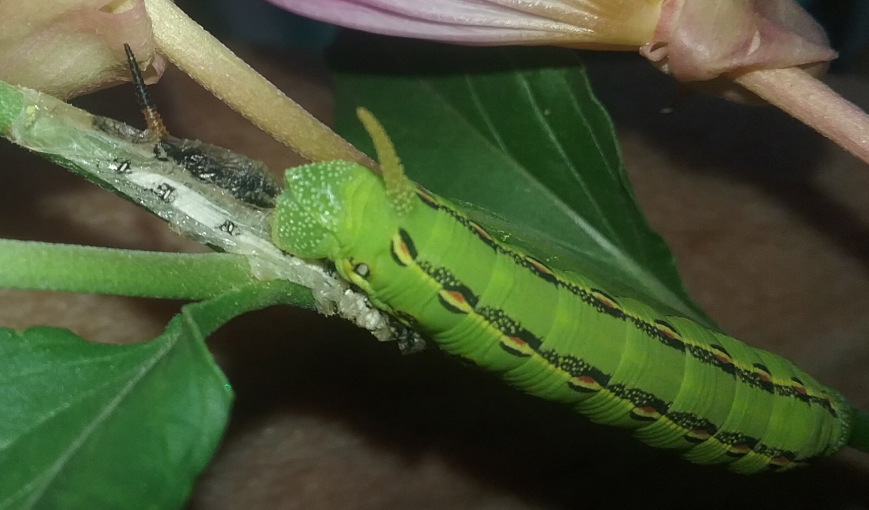Mom found some caterpillars munching on flowers in her back yard today. At first I thought they might be larvae of the moth Manduca quinquemaculata, AKA the “five-spotted hawkmoth” the AKA the “Tomato Hornworm”:
However my mother said she had looked those up and that these caterpillars were different. After looking them up myself I agree they do look a little different, but not much. I’ll be tagging my friend Don—a lepidopterist—to see what he thinks they might be (perhaps a closely related species?).
There were a number of individuals ranging in size and coloration. There were these two individuals that were about 1.5 to 2 inches long (fingers for scale):

Here is a close up of one of the smaller larva. Note the shed skin on the stem below and to the rear of the caterpillar.

Then there were these two larger larvae (2.5 inches or so). Note the slight difference in coloration between the two:

Then there was the beefiest cater-critter of them all. About 3 inches in length and rather radically different in coloration. Different species or do they change coloration as they molt? Again I’ll be deferring to my freind Don on this one.

My mother is going to attempt to rear them to adulthood, so perhaps I will have an update with some pictures of the adults in future.
Update: My friend Don got back to me and said the following (with a caution that these are not the group of moths in which he specializes:
“Looks like a white-lined sphinx moth larva. Hyles lineata. They feed on a variety of plants, and with this year’s rain should be all over. I’ve seen the larvae by the thousands at places like Anza Borrego State Park. The adults come to blacklights in most places around here.”
Looking at pictures of H. lineata this appears to my non-person eyes to be correct;













